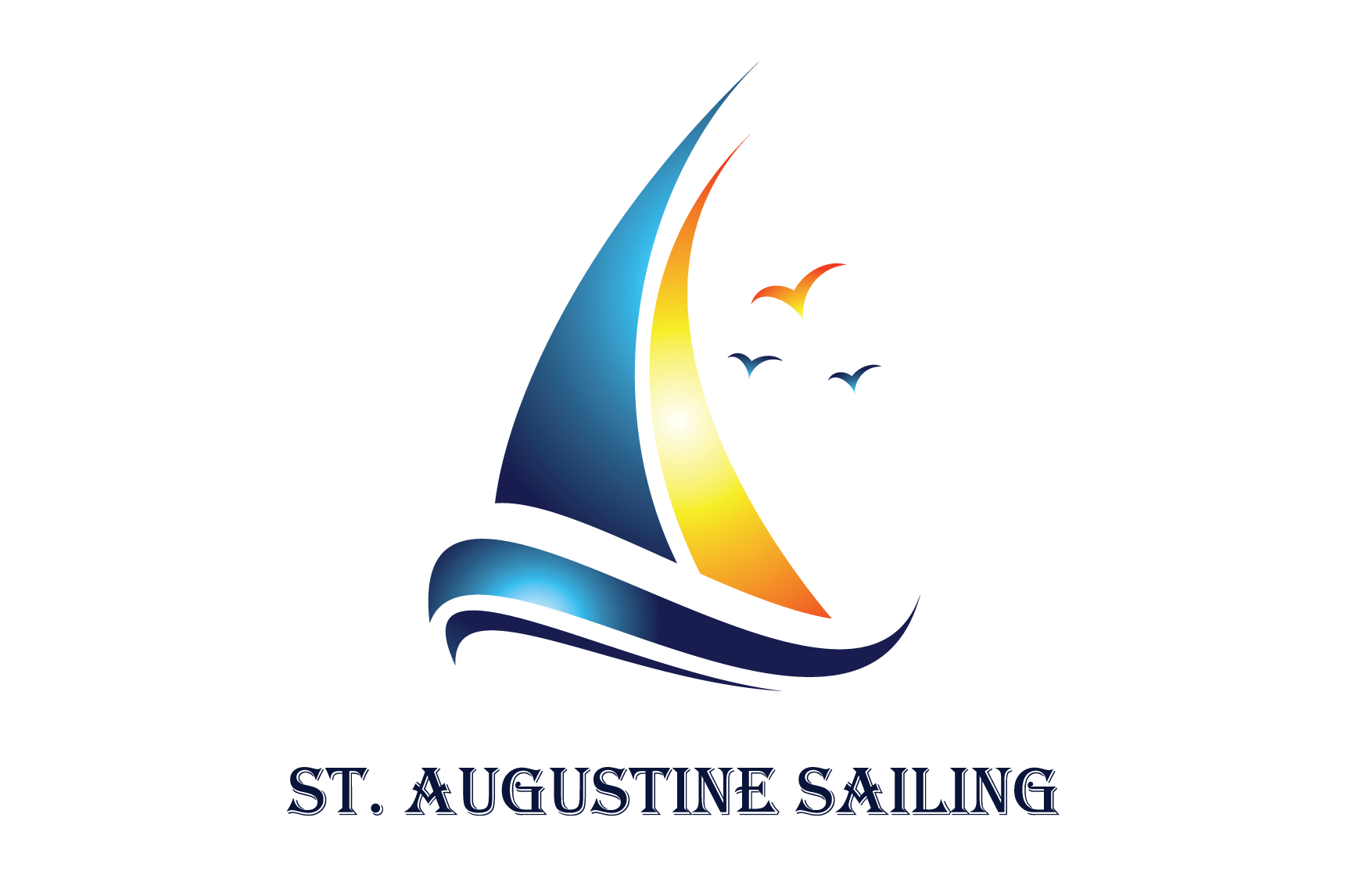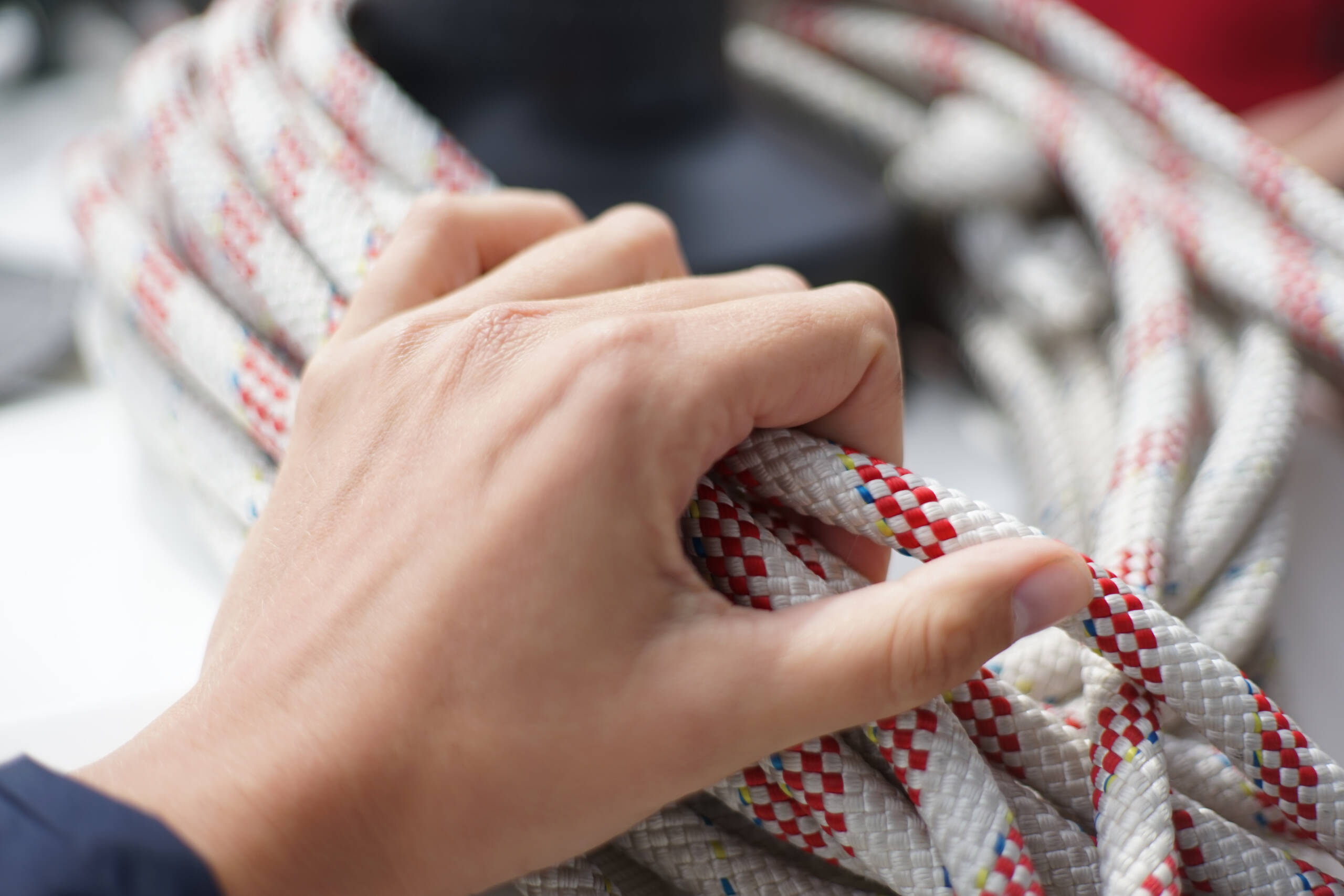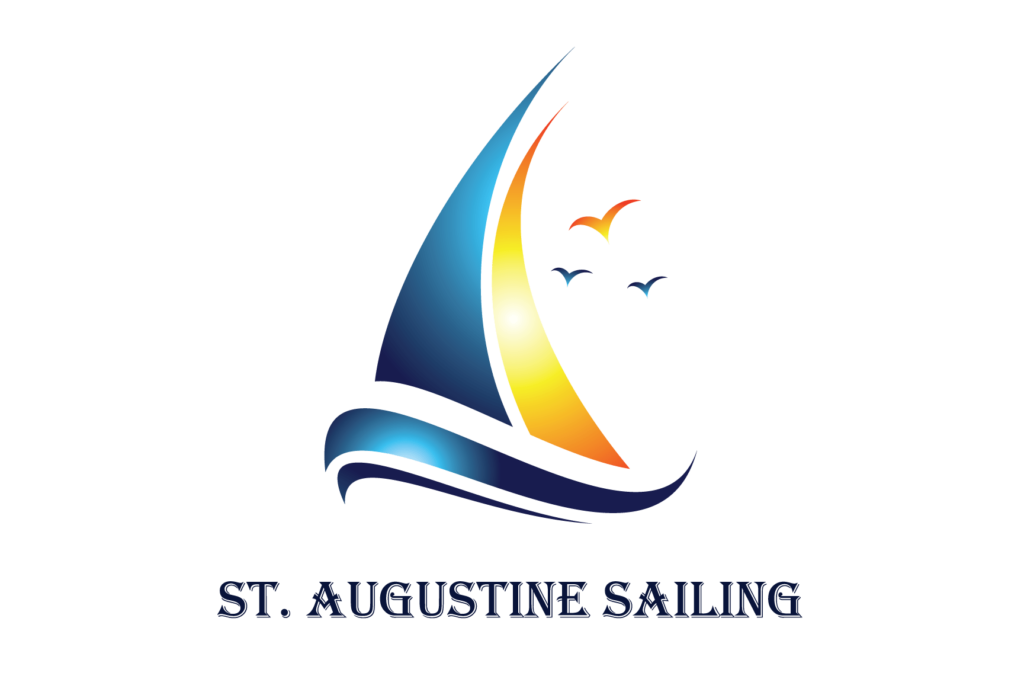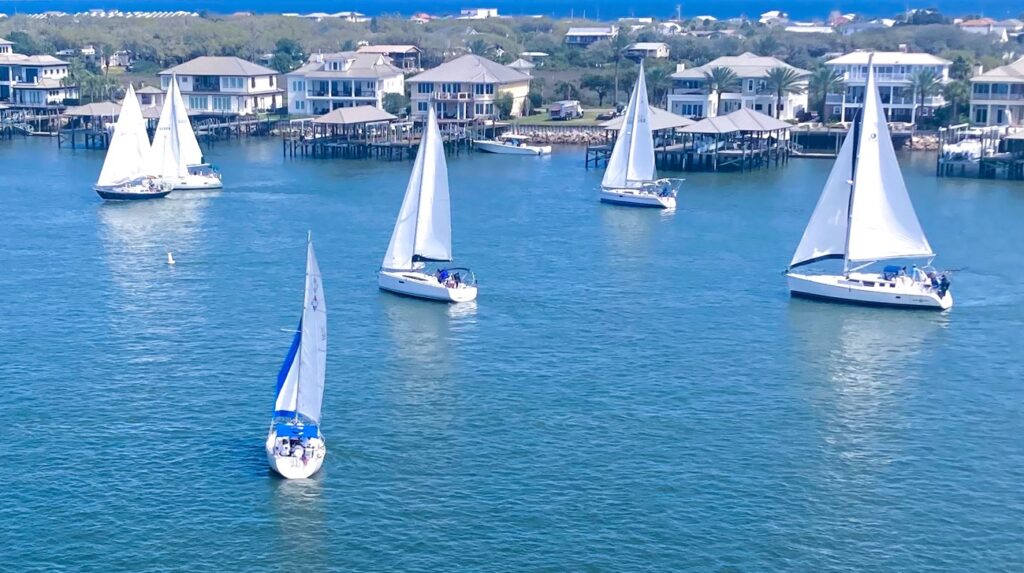SAILING TERMINOLOGY
Here at St. Augustine Sailing, we believe that anyone can sail, and should, enjoy the thrills of sailing the open waters; however, in order to do that safely and successfully, there are a few things that are necessary.
When learning to sail, we just can’t skip straight to the action. There is quite a bit of background knowledge that one must acquire when preparing to operate a sailboat. This knowledge begins with learning basic sailing terminology. And yes, we know what you may be thinking. . . but we promise it’s not as tedious as it sounds! In fact, becoming familiar with sailing terms is one of the best ways to gain confidence in your sailing skills.
While some of these words and phrases might seem a little obscure, it isn’t just silly sailor lingo. The mastery of these sailing terms is one of the best ways to keep yourself and others as safe. Want to learn more? Check out what the American Sailing Association (ASA) deems to be the “Sailing Terms Everyone Should Know”:
Basic Sailing Terms
PORT: Facing forward, this is anything to the left of the boat. When you’re onboard, you can use this term pretty much any time you would normally say “left.”
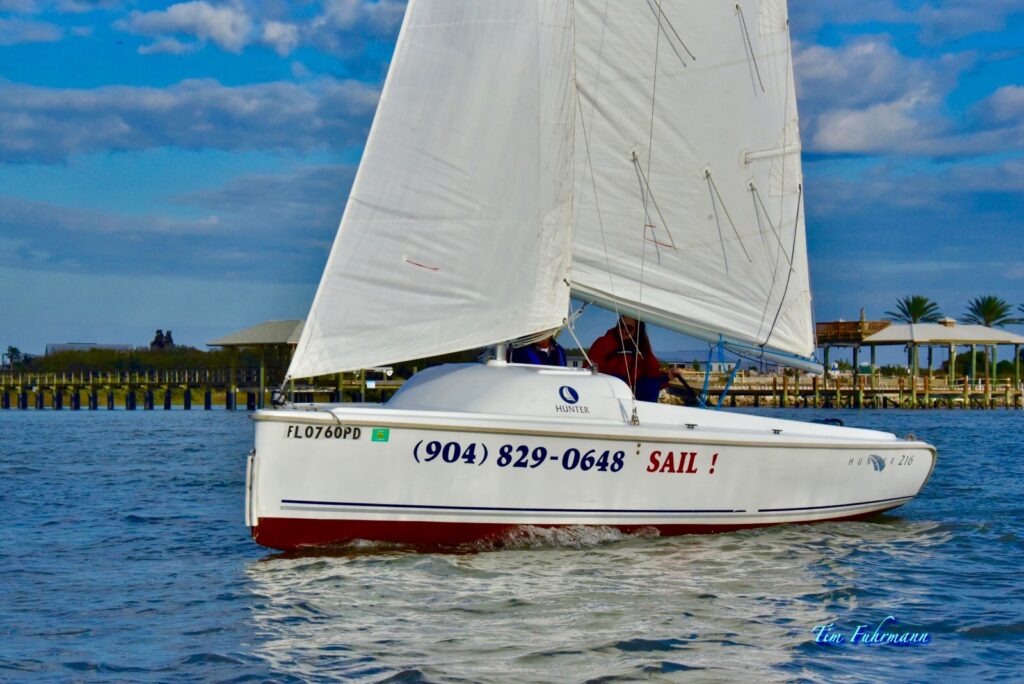
STARBOARD: Facing forward, this is anything to the right of the boat. When you’re onboard you can use this term pretty much any time you would normally say “right”.
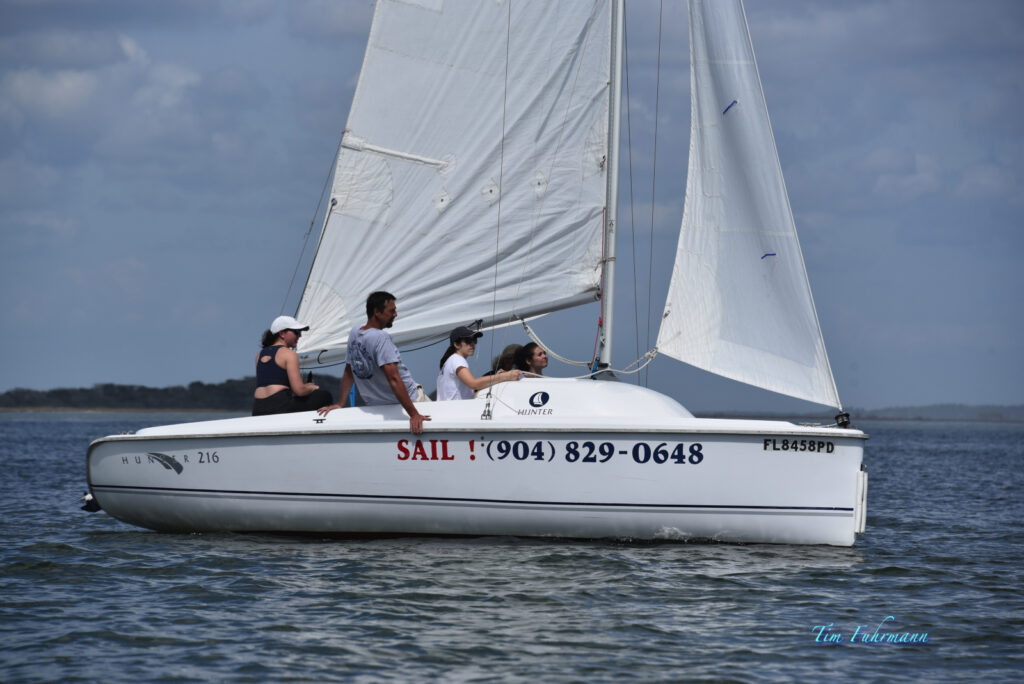
BOW: The bow is the forward part of the boat. Anything near the front of the boat is referred to as being “forward”.
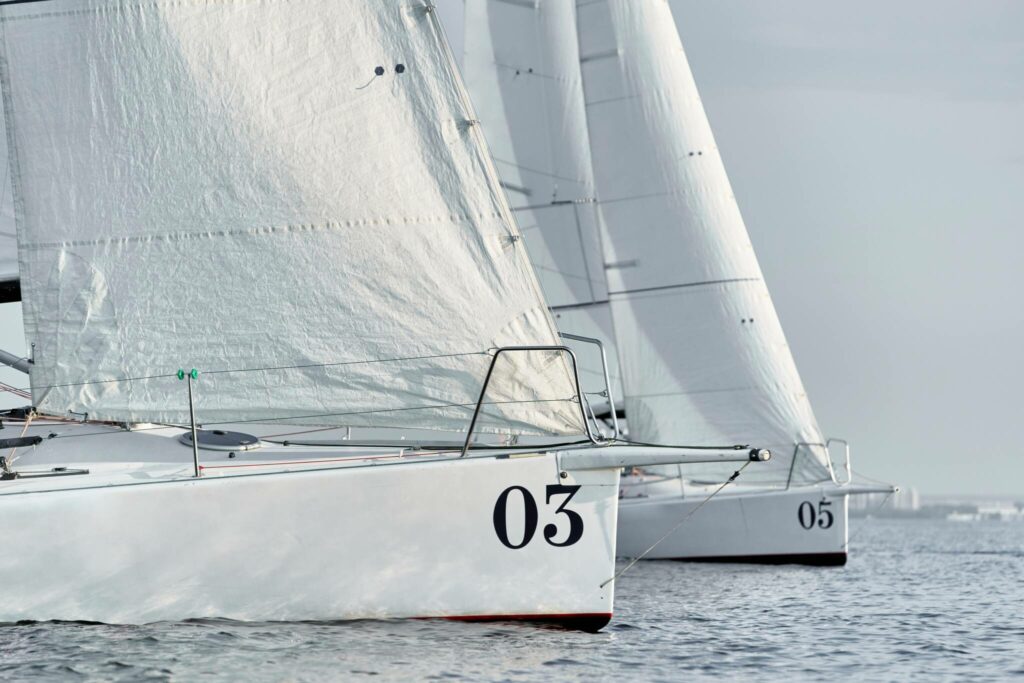
STERN: The stern is the back part of the boat. Anything toward the back is referred to as being “aft”.
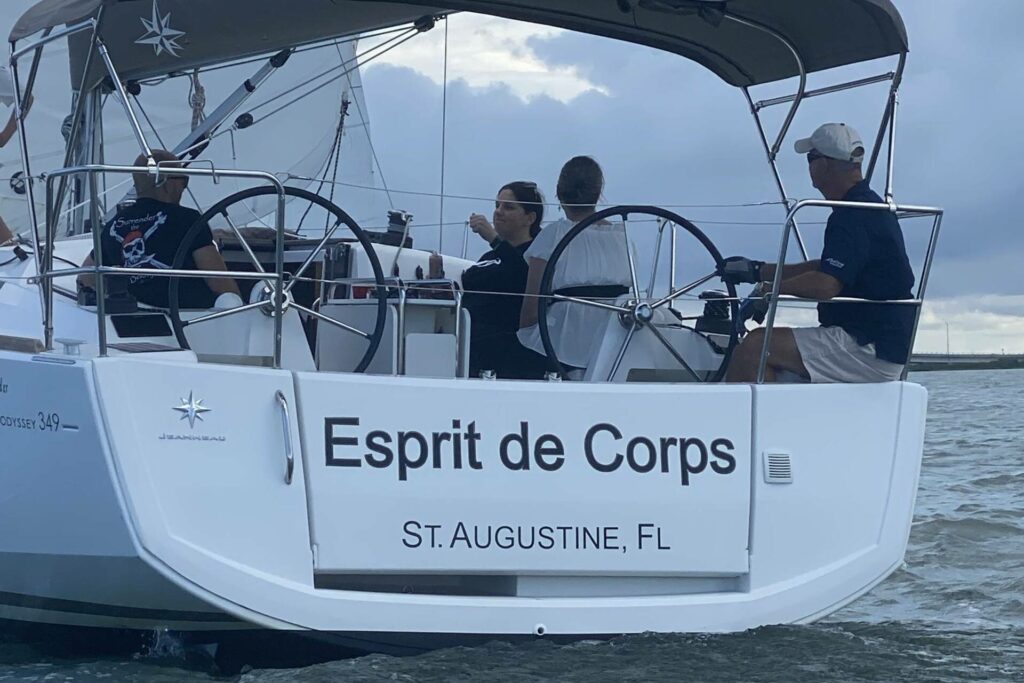
Helm: Where you steer the boat. Usually this is a big wheel, but on smaller boats it can be a tiller, which is basically a long wooden stick. Either of these can be used to control the boat’s rudder.

Keel: The keel is a long, heavy fin on the bottom of the boat that sticks down into the water. It provides stability and is the reason why modern sailboats are nearly impossible to capsize.
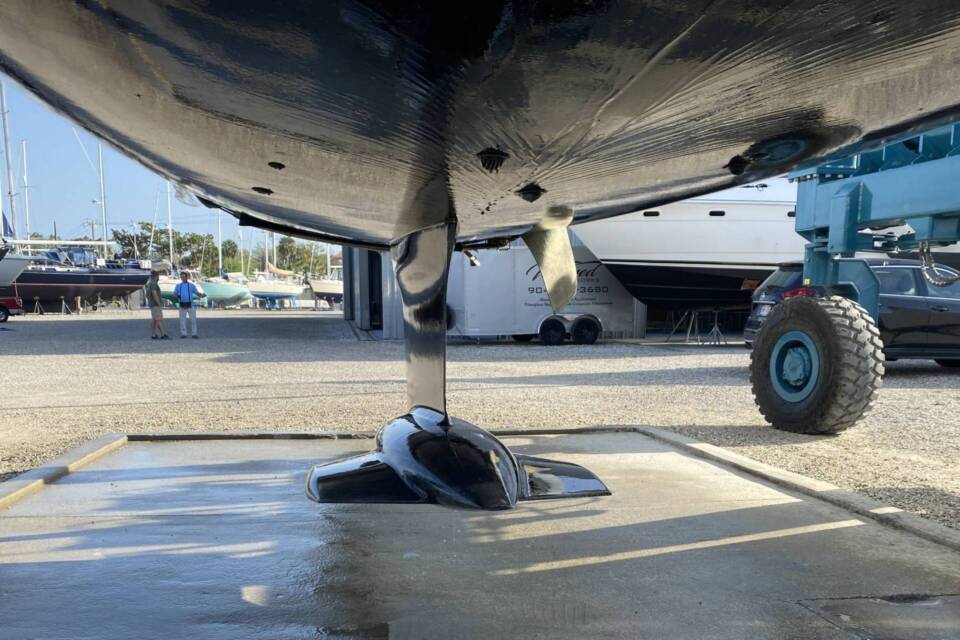
Heeling: This is the term for when a sailboat leans over in the water, pushed by the wind. There’s nothing else like the thrill of heeling over as your sails fill and your speed picks up!

Tack: This term has two distinct meanings, both of them very important. As a noun, your tack is the course you are on relative to the wind. For example, if the wind is blowing over the port side, you are on a port tack. If it’s blowing over the starboard side, you’re on a…you guessed it…starboard tack.
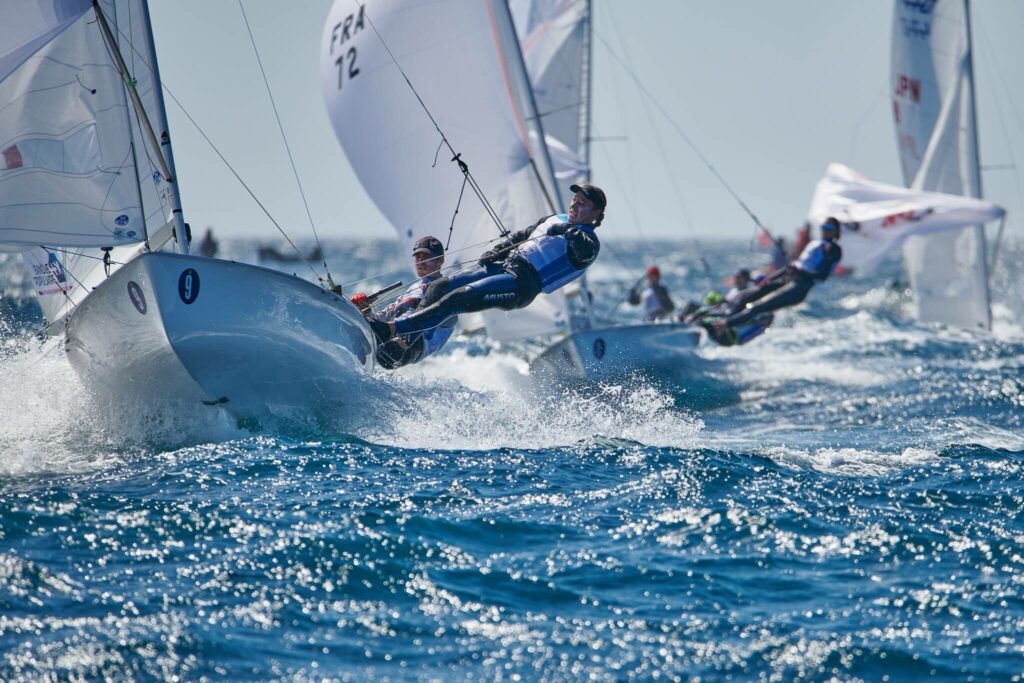
More Basic Sailing Terms
Tack: This term has two distinct meanings, both of them very important. As a verb, to tack is to change direction by turning the bow of the boat through the wind.
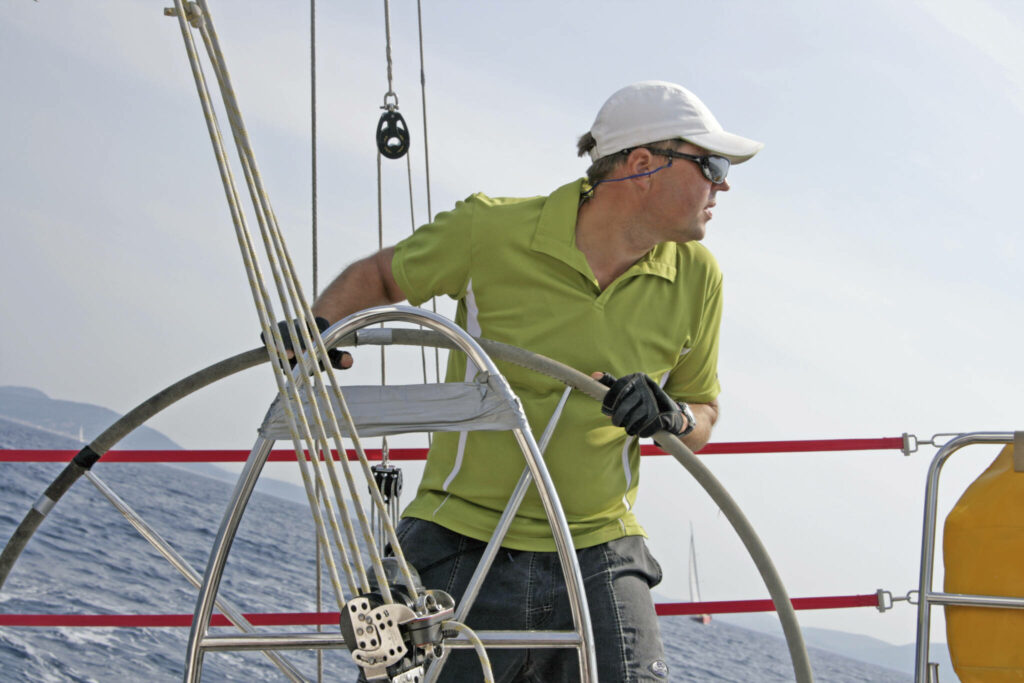
Jibe: A jibe is another way of changing direction, in which you bring the stern of the boat through the wind. Whether you choose to tack or jibe entirely depends on the situation–what’s around you, and the direction of the wind.
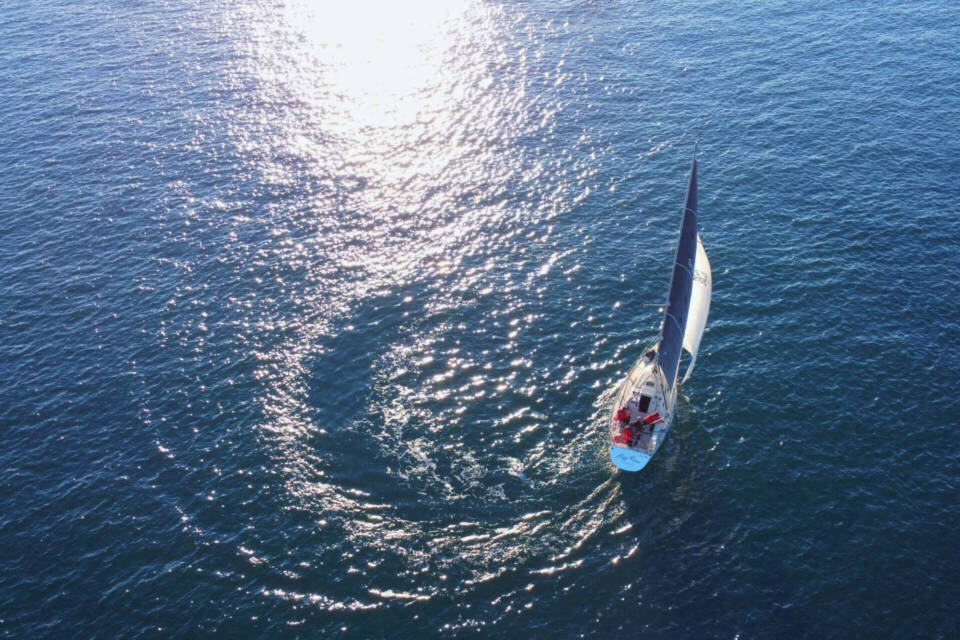
Windward: The side of the boat closest to the wind. When heeling over, this will always be the high side.
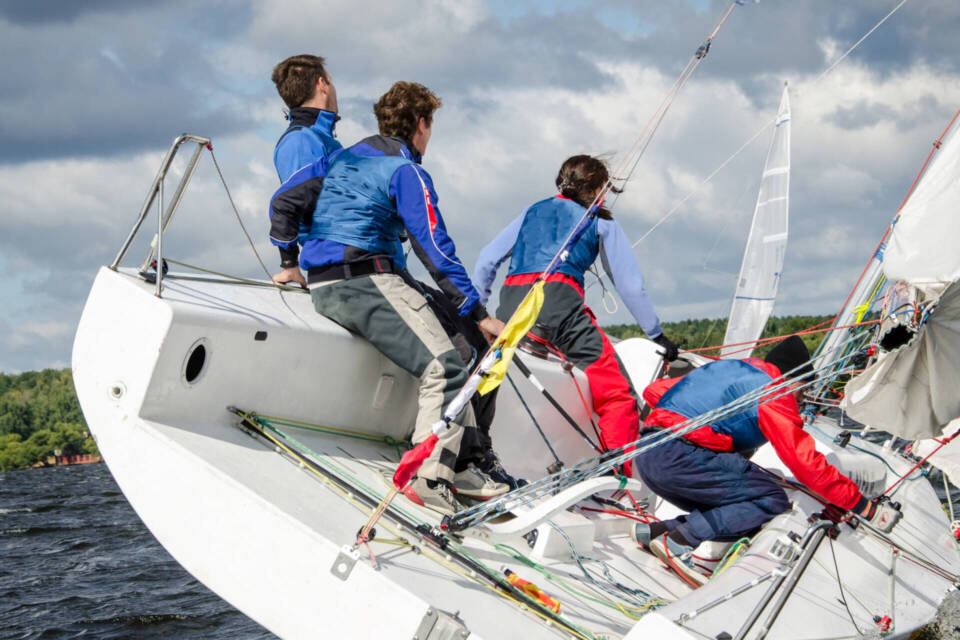
Leeward: The side of the boat furthest from the wind. When heeling over, this will always be the low side.
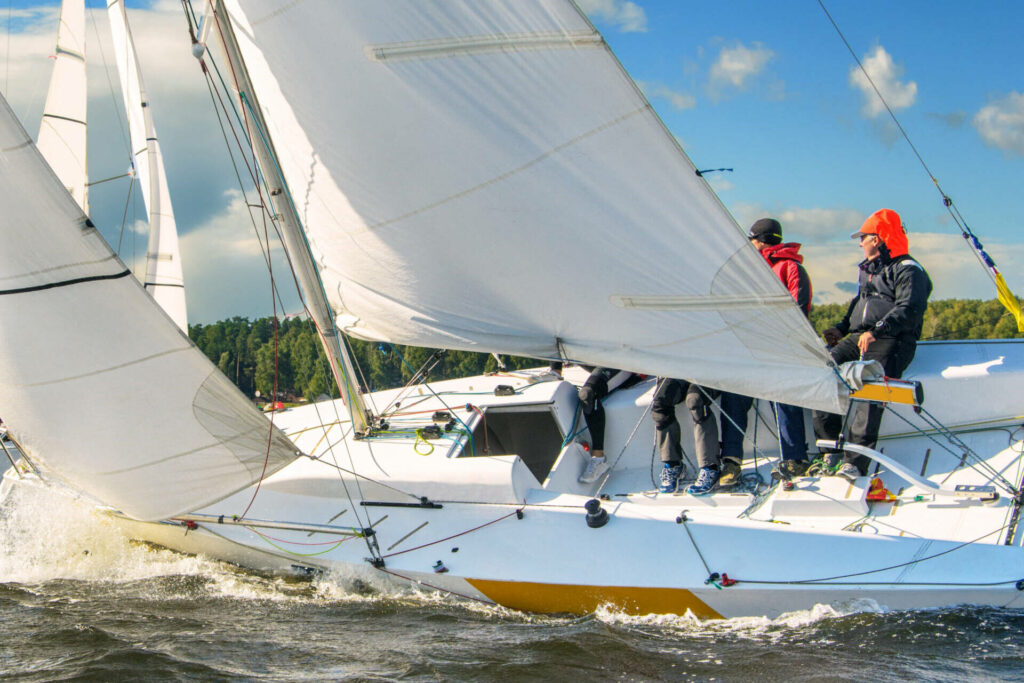
Mainsail: The big triangular sail just aft of the sailboat’s mast. As the name suggests, this is the boat’s largest and most important sail. Running along its bottom edge, the mainsail has a thick pole called the boom.
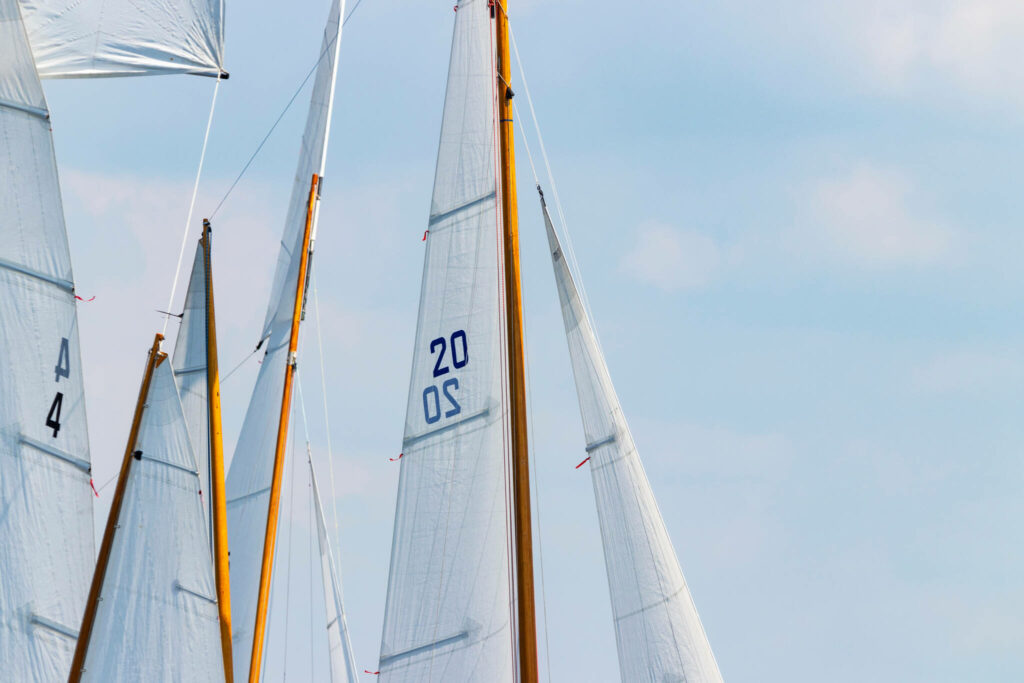
Jib: The next most common sail on any boat. The jib can always be found forward of the mast, and unlike the mainsail, does not have a boom.”
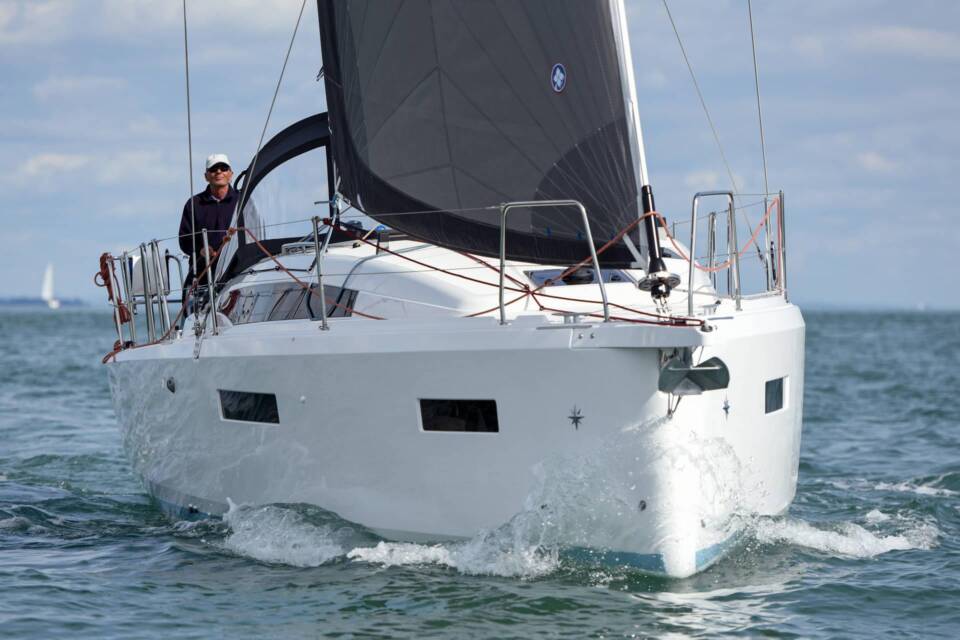
Lines: A rope undergoes a transformation into a line when applied on a boat. When a line is assigned a specific task, the line is given a name that corresponds to its job, like “Main Sheet” for example.
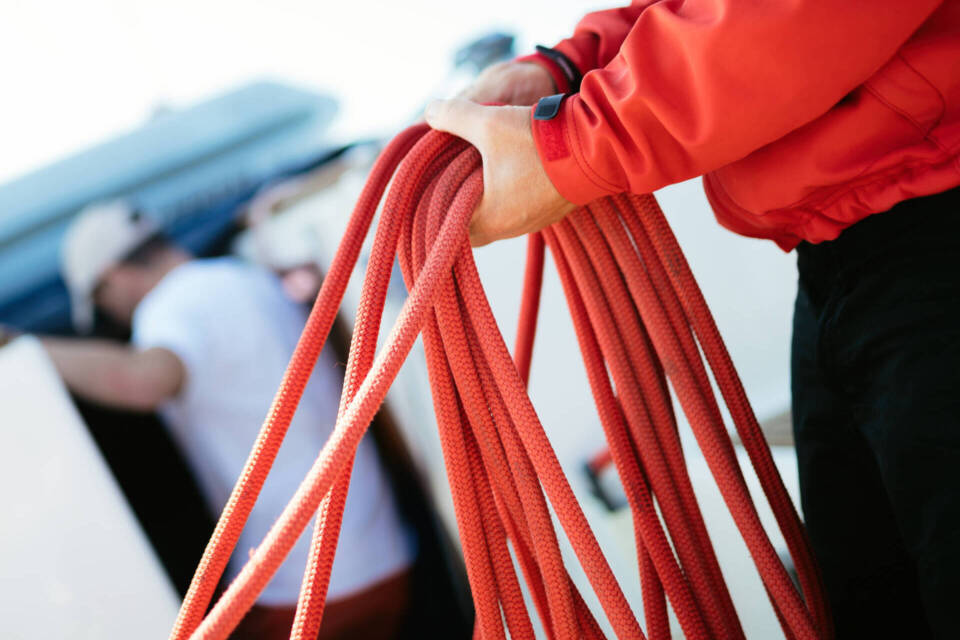
Point of Sail: The boat’s direction relative to the wind. For example, if you’re going straight into the wind, your point of sail is called “in irons.” (Note: This isn’t a good place to be!) If the wind is blowing straight over the side of the boat, that’s called a “beam reach.” There are eight commonly-used points of sail, and it’s a good idea to familiarize yourself with them before going out.
Let’s Go Sailing!
Feel like testing your newly-acquired knowledge? Come on down to St. Augustine Sailing and put those sailing terms to good use! We offer an Intro to Sailing course as a brief introduction to the wonderful world of sailing, and a Learn the Ropes course to bolster your sailing skills in a low-pressure environment.
Think you’re ready to take it a step further? Sign up for our ASA Certified Lessons, and let us help you become a true sailor.
